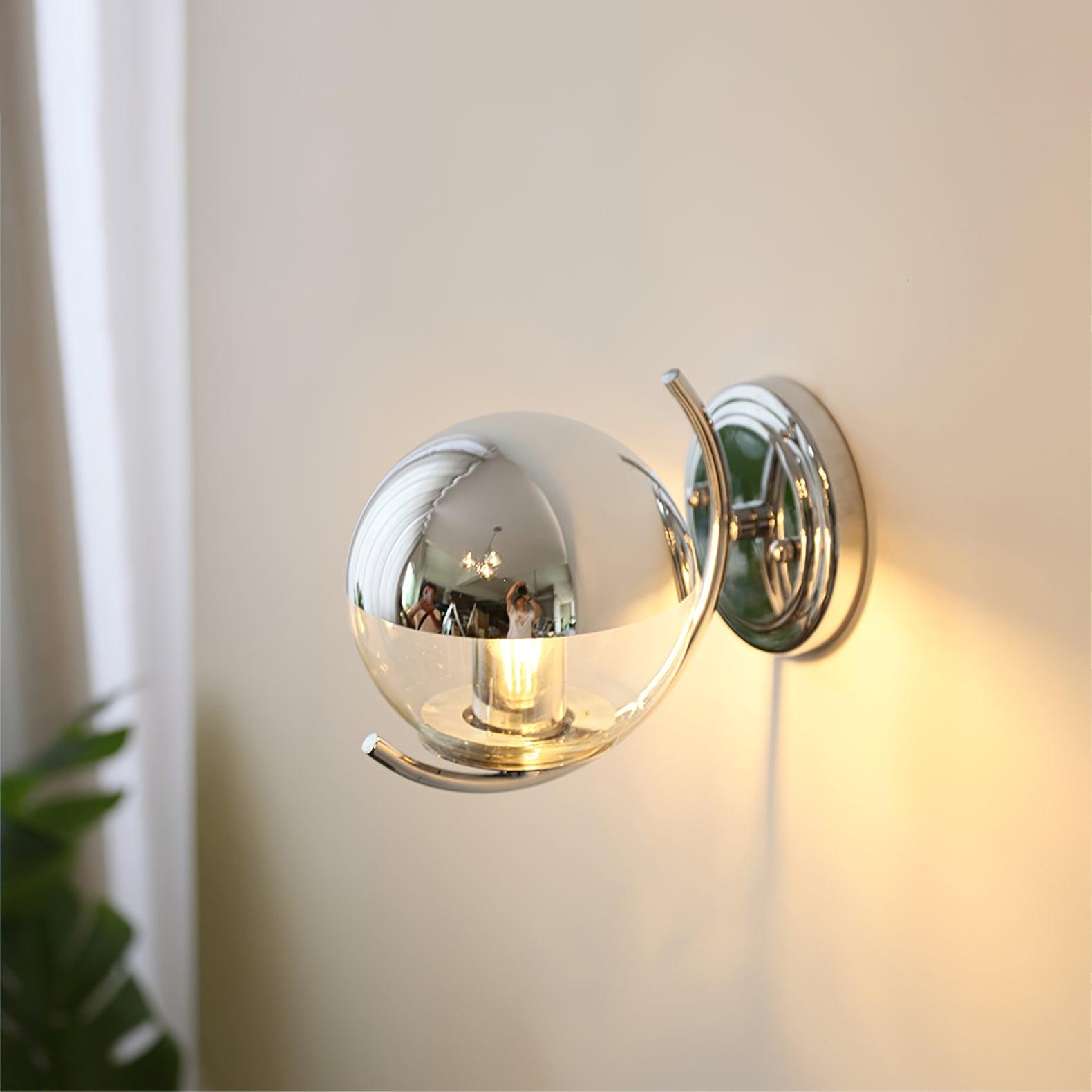
Light Up Your Space with Stylish Room Wall Lamps: A Guide to Choosing the Perfect Fixture
The Importance of Room Wall Lamps in Home Decor
Hozo Lighting plays a crucial role in home decor, as it not only illuminates a space but also enhances its ambiance. One type of lighting that can greatly contribute to the overall aesthetic of a room is room wall lamps. These lamps are not only functional but also serve as decorative elements that can elevate the style and atmosphere of any space.
Room wall lamps are fixtures that are mounted on the walls, providing both direct and indirect lighting. They come in various styles, designs, and sizes, allowing homeowners to choose the perfect lamp that suits their personal taste and complements their existing decor. Whether you want to create a cozy reading nook, highlight a piece of artwork, or simply add a touch of elegance to your space, room wall lamps can be the perfect solution.
Types of Room Wall Lamps: From Sconces to Swing Arm Lamps
There are several types of room wall lamps available on the market, each with its own unique features and benefits. One popular type is sconces, which are fixed to the wall and provide both ambient and task lighting. Sconces come in various designs, from traditional to modern, allowing homeowners to find the perfect match for their decor style. They can be used in bedrooms, living rooms, hallways, or any other area where additional lighting is needed.
Another type of room wall lamp is the swing arm lamp. These lamps have an adjustable arm that allows you to direct the light wherever you need it most. Swing arm lamps are perfect for reading corners or bedside tables, as they provide focused task lighting. They come in various styles and finishes, making it easy to find one that complements your decor.
Picture lights are another type of room wall lamp that is specifically designed to highlight artwork or photographs. These lamps are typically mounted above or beside a piece of art and provide focused accent lighting. Picture lights come in various sizes and finishes, allowing you to choose one that enhances the beauty of your artwork while adding a touch of elegance to your space.
Style and Design: Matching Your Room Wall Lamp to Your Home Decor
When choosing a room wall lamp, it is important to consider the style and design that will best complement your existing decor. One way to do this is by selecting a lamp that matches the overall theme of your space. For example, if you have a modern decor style, you may want to choose a sleek and minimalist lamp with clean lines. On the other hand, if you have a more traditional decor style, you may opt for a lamp with ornate details and a vintage-inspired design.
Another factor to consider is the color scheme of your space. You can either choose a room wall lamp that blends in with the existing color palette or one that serves as a statement piece by contrasting with the colors in the room. For example, if you have a neutral color scheme, you may want to choose a lamp with a pop of color to add visual interest.
Additionally, consider the size and scale of the room wall lamp in relation to the size of the room and other furniture pieces. A small lamp may get lost in a large room, while an oversized lamp may overwhelm a small space. It is important to find the right balance so that the lamp becomes a focal point without overpowering the room.
Materials and Finishes: Choosing the Right Material for Your Room Wall Lamp
Room wall lamps come in a variety of materials and finishes, each offering its own unique look and feel. Common materials include metal, glass, wood, and fabric. Metal lamps are durable and versatile, making them suitable for various decor styles. Glass lamps can add a touch of elegance and sophistication to any space. Wood lamps bring warmth and natural beauty to a room. Fabric lamps can add softness and texture to a space.
When choosing the material for your room wall lamp, it is important to consider both durability and aesthetic preferences. If you have children or pets, you may want to choose a material that is more resistant to wear and tear. Additionally, consider how the material will interact with the other elements in the room. For example, if you have a lot of wood furniture, a wooden lamp may help create a cohesive look.
Finishes are another important aspect to consider when choosing a room wall lamp. Finishes can range from polished metals to matte paints, and each finish can create a different look and feel. Polished finishes can add a touch of glamour and sophistication, while matte finishes can create a more understated and relaxed vibe. Consider the overall aesthetic of your space and choose a finish that complements it.
Size and Placement: Determining the Right Size and Placement for Your Room Wall Lamp
Choosing the right size and placement for your room wall lamp is crucial to ensure that it not only provides adequate lighting but also enhances the overall aesthetic of the space. When determining the size of the lamp, consider both its height and width. The height of the lamp should be proportional to the height of the wall or the furniture it is mounted above. The width of the lamp should be proportional to the size of the wall or the furniture it is mounted beside.
Placement is also an important factor to consider when installing a room wall lamp. The height at which you mount the lamp will depend on its purpose. If you are using it for ambient lighting, it should be mounted at eye level or slightly above. If you are using it for task lighting, such as reading or working, it should be mounted at a height that allows for optimal visibility.
Additionally, consider how the lamp will interact with other elements in the room. For example, if you are mounting a lamp beside a bed, make sure it is positioned in a way that allows for easy access to the switch and does not interfere with any other furniture pieces. If you are mounting a lamp above a piece of artwork, make sure it is positioned in a way that highlights the artwork without casting shadows.
Lighting Functionality: Understanding the Different Types of Lighting and Their Effects
Room wall lamps can serve different lighting functions, depending on the type of lamp and its placement. Understanding the different types of lighting and their effects can help you achieve the desired ambiance in your space.
Ambient lighting is the general lighting that illuminates a room and provides overall visibility. Room wall lamps can contribute to ambient lighting by providing soft, diffused light that fills the space. This type of lighting is important for creating a warm and inviting atmosphere.
Task lighting is focused lighting that is used for specific activities, such as reading, working, or applying makeup. Room wall lamps can be used as task lighting by positioning them in a way that directs the light towards the area where it is needed. This type of lighting is important for providing adequate visibility and preventing eye strain.
Accent lighting is used to highlight specific objects or areas in a room, such as artwork, architectural features, or decorative elements. Room wall lamps can be used as accent lighting by positioning them above or beside the object or area you want to highlight. This type of lighting adds depth and visual interest to a space.
Energy Efficiency: Choosing Energy-Efficient Room Wall Lamps
In today’s world, energy efficiency is an important consideration when choosing any type of lighting. Room wall lamps can be energy-efficient by using LED bulbs instead of traditional incandescent bulbs. LED bulbs are more energy-efficient and have a longer lifespan, making them a cost-effective and environmentally friendly choice.
When choosing an energy-efficient room wall lamp, look for lamps that are labeled as ENERGY STAR certified. ENERGY STAR certified lamps meet strict energy efficiency guidelines set by the U.S. Environmental Protection Agency and can help you save money on your energy bills.
Additionally, consider the wattage of the bulbs used in the lamp. Lower wattage bulbs consume less energy and can still provide adequate lighting for most tasks. If you need brighter lighting, consider using multiple lamps instead of one high-wattage lamp.
Maintenance and Care: Keeping Your Room Wall Lamps Clean and Functional
Proper maintenance and care are essential to keep your room wall lamps clean and functional. Regular cleaning can help prevent dust and dirt buildup, which can affect the performance of the lamp. Here are some tips for maintaining and caring for your room wall lamps:
– Dust the lamp regularly using a soft cloth or a feather duster. Be sure to turn off the lamp and let it cool down before cleaning.
– Use a mild cleaning solution and a soft cloth to remove any stains or smudges from the lamp. Avoid using harsh chemicals or abrasive materials, as they can damage the finish.
– Check the bulbs regularly and replace them as needed. Be sure to follow the manufacturer’s instructions for bulb replacement.
– Inspect the wiring and connections of the lamp periodically to ensure they are in good condition. If you notice any frayed wires or loose connections, contact a professional electrician for repairs.
– If your room wall lamp has a fabric shade, vacuum it regularly to remove dust and dirt. You can also spot clean any stains using a mild detergent and water.
Installation: Tips and Tricks for Installing Your Room Wall Lamps
Installing room wall lamps may seem like a daunting task, but with the right tools and instructions, it can be a relatively simple process. Here are some tips and tricks for installing your room wall lamps:
1. Gather all the necessary tools and materials before starting the installation process. This may include a drill, screws, anchors, a screwdriver, and a level.
2. Determine the desired height and placement of the lamp. Use a measuring tape and a level to ensure accuracy.
3. Mark the location where the lamp will be mounted. Use a pencil to make small marks on the wall.
4. If necessary, use a drill to create holes for the screws or anchors. Be sure to choose the appropriate size drill bit for the type of wall you are working with.
5. Attach any necessary mounting brackets or plates to the wall using screws or anchors.
6. Carefully mount the lamp onto the brackets or plates, ensuring that it is securely attached.
7. Connect the wiring of the lamp according to the manufacturer’s instructions. If you are unsure about electrical work, it is best to hire a professional electrician for this step.
8. Test the lamp to ensure that it is working properly before finishing the installation process.
Bringing Style and Functionality to Your Space with Room Wall Lamps
Room wall lamps are not only functional lighting fixtures but also decorative elements that can enhance the style and ambiance of any space. By choosing the right type, style, and design, you can bring both style and functionality to your space.
Whether you want to create a cozy reading nook, highlight a piece of artwork, or simply add a touch of elegance to your space, room wall lamps can be the perfect solution. With their various types, styles, designs, materials, and finishes, there is a room wall lamp out there for every decor style and personal preference.
So why not consider adding room wall lamps to your own space? They can provide both practical lighting and aesthetic appeal, creating a warm and inviting atmosphere that you and your guests will love. With proper maintenance and care, your room wall lamps will continue to enhance your space for years to come.
